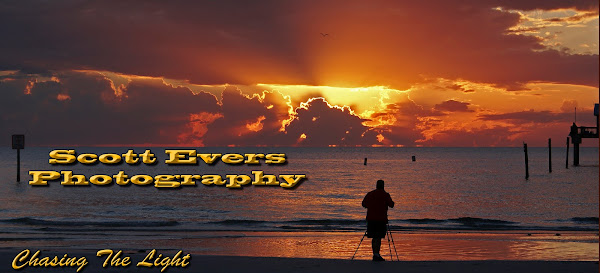As an avid macro photographer I really try to follow the rules, recomendations, or accepted guidelines to create the best photographs possible. My macro lens is a Canon 180mm f3.5 L series lens. It is very heavy, built like a tank, and when used properly, will give you amazing colors and detail. Generally I like to add my 1.4 extender to push the focal length to 252mm. This allows me to have frame filling compositions on small subjects without having to get nearly as close as you would have to with a short focal length macro lens. The longer focal length also does a much better job of creating the beautiful bokeh (blurred backgrounds) when there is seperation between you subject and the background.
Eastern Tiger Swallowtail on Compass Plant Flowers
With my macro setup, it is usually mandatory that I use a tripod. Normally I am shooting early in the morning or late in the evening when the light is low and soft. The drawback is I end up shooting at very slow shutter speeds. Also at these times there is less chance of a breeze to create movement. So generally as long as your subject is stationary, you can get some really sharp detail in your images. I use a cable release for the shutter, and I also use mirror lockup to further reduce vibrations and create the sharpest shot possible. I will shoot the subject and vary the f stop setting to try and keep my subject sharp but further blur the background.
Gray Hairstreak Butterfly
Many short focal length macro lenses (50-100mm) are light weight and give you a much better chance of getting off the tripod and getting some really good hand held macro shots. All the camera manufacturers have a variety of macro lenses in their lineup, and all the after market lens makers such as Sigma, Tokina, and Tamron do to. I am not going to give advice on them as everyone has differant needs in a macro lens. My choice was based on wanting the very best lens available that would give me great colors, bokeh, and razor sharp detail. The trade off is it is heavy, and not really good for doing hand held macro work. It is slow focusing in auto mode, but most macro lenses are. If you are doing precision macro you are generally manually focusing anyway.
Spicebush Swallowtail Butterfly on a native Thistle Flower
The other day the weather finally broke here in the mid-west with much cooler temps. and the humidity also dropped offf quite a bit. This has made the past few days very enjoyable. I had to stop by our local nature center to drop off some photos on a CD for them and I noticed the place was swarming with butterflies. They were in a feeding frenzy and the flowers were covered with several varities of them. This was just to tempting to pass up as a nature photographer. I really did not have much time, but I had my camera in the car but no tripod. Another issue was it was pretty breezy and the flowers were blowing all over the place. Normally under these conditions I would try to capture these with my 70-200 f2.8L IS lens with the extender on it. Being a fast lens and image stabilized, I have had some decent success taking butterflies with that setup.
Fiery Skipper Butterfly on Purple Cone Flower
The interesting thing was it was around 11:30am and very bright and sunny. Normally under the hot humid conditions the light would be harsh and contrasty. This day it seemed bright but acceptable to try to use my macro lens. I set my ISO to 400, my f stop to f8, and then I went to AI Servo mode and continious shooting mode. The same setup you would use for photographing sports or birds in flight. Crazy for macro work right? In the bright sunlight I was getting shutter speeds from 1/1000 to 1/2000. I was hoping the Servo tracking mode would somewhat keep up with the blowing flowers. Again my macro lens is slow in auto focus and tracking but I thought I would see if I could get some images that were acceptable. So in a short time I shot about 200 frames. Very difficult conditions to try and do serious macro work in. Knowing my equipment vey well and being able to read the light was helpful in at least getting a few acceptable images. I came up with these four images as the best I could get after some post processing in Photoshop CS5.
So there are general rules and acceptable guidlines for many things in photography, but you should always push the rules and occasionally break them all just to see what happens. Sometimes you mess up bad, but digital is cheap! Then sometimes you create something amazing. I was pretty happy with these under the conditions I shot them in.
So where is Scott next week.? This Friday 8-27-10, I am attending a one day Adobe Photoshop class in St. Louis. On Tuesday 08-31-10, I am headed to Las Vegas to attend the Photoshop World Convention for three days. I will try to post from there if time permits.





No comments:
Post a Comment